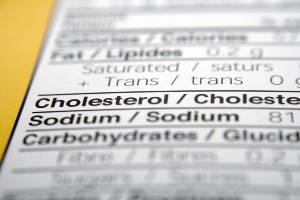How the Atkins Diet Works to Burn Fat Faster
Discussions about how the Atkins diet works have been going on for decades, ever since Dr. Atkins published his first book in 1972. Debates about how well it really works and whether it is healthy or not continue to rage today. The main reason there is so much controversy over how the Atkins diet works is because it runs counter to all of the diet advice that most of us had been following for generations before Atkins came along.
The Atkins Approach Focuses on the Foods You Eat – NOT Calories

Traditional diets focus on calorie intake – the fewer calories you take in, the more weight you will lose. The Atkins approach focuses on what kind of foods you eat instead of the number of calories. It means no more counting calories. Instead, you need to watch your carbohydrate intake because Dr. Atkins felt that carbohydrates were what lead to weight gain. In other words, if you limit your carbs, you’ll lose weight because you will burn stored body fat in the absence of carbs for fuel. Carbohydrates
It sounds simple, but there are a variety of factors involved. How does the Atkins diet work to get you to burn off the fat? Carbohydrates are the basic fuel for energy in the human body, and the first fuel the body will naturally turn to. So if you’re eating a lot of pastas, breads, rice, and snack foods like crackers, you will naturally burn these first. Anything extra will be stored as fat.
Proteins and Fats
Proteins and fats, on the other hand, are fuels that the body processes differently. They can also be used as fuel, but they break down into energy more slowly and aren’t as readily stored as fat in the body.
What is “Ketosis”?
Naturally, if you eat more fats and proteins your body will be working harder to convert it to energy and relying as well on some of the fat already stored in your body – it’s a sort of “double whammy” – you are working harder to convert foods into energy and you are using more of your extra body fat. “Ketosis” is the term for the body’s converting stored fat into energy when there is not a sufficient source from carbohydrates, and it is the basis for how the Atkins diet works.
Stabilize Insulin Production
You may also wonder how the Atkins Diet works by slowing the production of insulin in the body. Insulin is the chemical that converts sugars and carbohydrates into fuel. The more carbs you take in, the more insulin your body will produce in order to keep your blood sugar from getting too high. If you don’t use the sugars as fuel, the insulin will convert it to “storage mode” – it becomes body fat to be saved for use later when you may need it.
Today most of us have plenty of food and don’t really need to be storing away fat for use as an energy source – we probably won’t ever be lacking food. So the Atkins diet works to suppress and stabilize insulin production and allow you to burn more of your stored fat as energy. Interestingly, once you are starting the Atkins diet, your cravings for sweets and carbohydrates usually decrease as your blood sugar and insulin levels stabilize.
You Won’t Have to Avoid Carbohydrates Forever
Remember, you won’t always have to avoid carbohydrates completely. There are four phases to the Atkins Diet. Each one allows more carbohydrates in your daily diet so that you won’t get bored and you will get some of the energy and fuel you need from this traditional source. If you choose to stay on the maintenance program after losing the weight you want, you will be able to eat carbs in moderation so that you don’t gain back what you lost, but you don’t continue dropping weight, either.
At first most doctors were skeptical about a diet that didn’t count calories, but today the medical community is split. Many still have reservations about how the Atkins diet works, but just as many feel the Atkins approach is sound because it takes the worry out of counting calories and has lots of protein, an important resource for muscle development and overall health.
Is the Atkins Diet Safe?

Why Some Doctors are Against the Atkins Diet
The 4 Phases

The Complete Atkins Induction Diet Food List
Success Stories

Share Your Atkins Success Story


